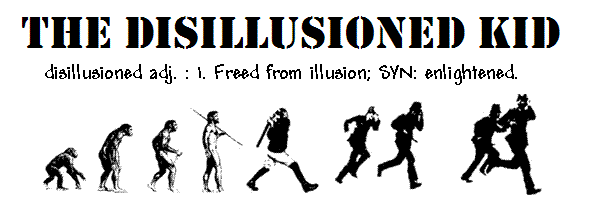Killing Me Calmly?
According to the Associated Press report, the suicide bombers who struck Israel on Tuesday, killing at least 16 and wounding 80, "ended a period of relative calm", a sentiment echoed in much of the mainstream (dominant?) media. This lull has apparently been attributed by Israeli officials "to its crackdown on Palestinian militants and continued construction of a separation barrier in the West Bank. Palestinian militants have acknowledged they have faced increasing difficulties carrying out attacks." Certainly recent months have not seen any major terrorist incidents within Israel but to talk of "relative calm" is somewhat disingenuous.
It is worth bearing in mind that, as Aluf Ben writing in Haaretz points out, "[A]ttempts at suicide bombings did not cease for a moment, that the Palestinian motivation remained the same, and that during the false calm hundreds of similar incidents were prevented." More striking is the reality of this period of "calm" for those living in the Occupied Territories. Arjan El Fassed, in a report for Electronic Intifada (which I found thanks to 'Lenin'), writes,
With images of death and destruction in the Middle East returning to our TVs it is easy to dismiss the situation in the region as hopeless. There are, however, some glimmers of hope. Among them, reports that Mahatma Gandhi's grandson "Arun Gandhi, is to kick off a Palestinian campaign for an unarmed, popular struggle against the Israeli occupation." Gandhi has met with Yasser Arafat and Palestinian PM Ahmed Qureia, participated in demos against the "Apartheid Wall"/"Security Fence" and addressed large rallies. For what it's worth, I find myself in agreement with large parts of, Canadian Palestine solidarity campaigner, Charles Demer's assessment of the developments, although I'm less keen on some of his rhetorical turns:
It is worth bearing in mind that, as Aluf Ben writing in Haaretz points out, "[A]ttempts at suicide bombings did not cease for a moment, that the Palestinian motivation remained the same, and that during the false calm hundreds of similar incidents were prevented." More striking is the reality of this period of "calm" for those living in the Occupied Territories. Arjan El Fassed, in a report for Electronic Intifada (which I found thanks to 'Lenin'), writes,
While mainstream media tend to portray suicide bombings as a return to violence after a relatively peaceful period, there have been numerous killings in the weeks leading up to suicide bombings that underscore the lack of evenhanded attention given to loss of life in the Israeli-Palestinian conflict.That this can be described as calm says much about the inherent biases of the media. The effect of putting greater weight to the deaths of Israelis rather than Palestinians is to present a distorted picture to a public with, at best, a limited understanding of the conflict. Arjan El Fassed concludes,
According to statistics from the Red Crescent at least 436 Palestinians have been killed since March 14 to August 31. This month alone, Israeli forces killed 43 Palestinians and injured 285. In May Israeli forces killed 128 Palestinians and wounded 545. In March Israeli forces killed 92 Palestinians, of which 44 Palestinians were killed in the first part of that month.
In order to convey the Mideast crisis in all its complexity, journalists need to take seriously the violence suffered by all communities. References to "relative calm" while Palestinians are being routinely killed only serve to trivialize human life and obscure the cycle of violence that afflicts the region.A conclusion I wholeheartedly support.
With images of death and destruction in the Middle East returning to our TVs it is easy to dismiss the situation in the region as hopeless. There are, however, some glimmers of hope. Among them, reports that Mahatma Gandhi's grandson "Arun Gandhi, is to kick off a Palestinian campaign for an unarmed, popular struggle against the Israeli occupation." Gandhi has met with Yasser Arafat and Palestinian PM Ahmed Qureia, participated in demos against the "Apartheid Wall"/"Security Fence" and addressed large rallies. For what it's worth, I find myself in agreement with large parts of, Canadian Palestine solidarity campaigner, Charles Demer's assessment of the developments, although I'm less keen on some of his rhetorical turns:
The re-emergence of non-violent tendencies within the Palestinian national movement is cause for celebration, but not moralizing nor condescension. There is still a place for the armed struggle to which Palestinians, as an occupied people, have an absolute right. Morality plays and fairy tales widely entertained in the West about the non-violence of Gandhi?s struggle to free India are often marked by enormous and important omissions ? namely the role played by Punjabi Sikhs like Shaheed Bhagat Singh and others who never adhered to the dominant pacifist line and who subsequently bore the burden of martyrdom in numbers wholly disproportionate to the demographics of South Asia.The Second Intifada has been raging for four years now and the Palestinians are little closer to achieving freedom than they were when it began, despite huge sacrifices. It is to be hoped that the emergence of major non-violent resistance can move their struggle for freedom forward and contribute to ending the cycle of violence that has claimed so many lives. If not, the situation is indeed grim.
But there is no question that, by nature, non-violent tactics such as civil disobedience, general strikes, and hunger strikes are more accessible devices open to participation by broader layers of society. What?s more, Palestinians have a history of remarkable creativity in terms of developing new and innovative ways of resisting Zionism, such as the movement towards growing vegetable gardens to facilitate boycotts of Israeli goods. In the face of a renewed social movement, Palestinian political violence will hopefully move away from acts of individual desperation (which ultimately serve to underscore the Israeli attempt to devalue Palestinian life) and towards a more concentrated and constructive tendency.



















Links to this post:
Create a Link
<< Home